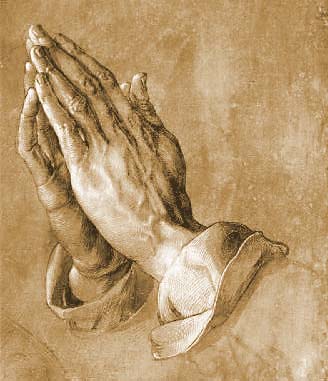
 During a recent visit to Europe I had some informal discussions about religious conceptions with other Gaudiya Vaisnavas and I was surprised to hear some devotees speak about such groups as the Sufis, Whirling Dervishes, Jews, Christians, Catholics, Orthodox Christians and Muslims as being deeply ‘surrendered’ souls. Of course, generally speaking this may be true – but surrendered to what? I would like to point out in this article that sraddha [faith], saranagati [surrender] and seva [service] are spiritual substances and activities that are only transcendental when in direct connection to Krsna and that the popular religions of today’s world are but the continuation of a Vedic heresy that began long, long ago in ancient times.
During a recent visit to Europe I had some informal discussions about religious conceptions with other Gaudiya Vaisnavas and I was surprised to hear some devotees speak about such groups as the Sufis, Whirling Dervishes, Jews, Christians, Catholics, Orthodox Christians and Muslims as being deeply ‘surrendered’ souls. Of course, generally speaking this may be true – but surrendered to what? I would like to point out in this article that sraddha [faith], saranagati [surrender] and seva [service] are spiritual substances and activities that are only transcendental when in direct connection to Krsna and that the popular religions of today’s world are but the continuation of a Vedic heresy that began long, long ago in ancient times.
The first point is that dharma [real religion] is given by God himself – dharman tu saksat bhagavat pranitam. Real religion is not man-made. Dharma is the knowledge and activities of the intrinsic relationship that exists between Krsna and all living entities eternally. This is sometimes called sanatana-dharma, eternal religious principles. In a word sanatana-dharma has been summed up as seva, or the living entities relationship of service to the Supreme Being. Therefore, so-called service to various deities or to icons that are conjured by man can never be considered seva in the true sense of the word.
Bhaktisiddhanta Sarasvati Thakura once commented on the situation of spirituality in India that, "At present many false meanings have been imported into the word devotion. Regard for one’s parents, loyalty to man, obedience to the teacher, etc, pass as bhakti.” (Sarasvati Thakura, lecture, Vrndavana 1928)
In a similar way one can say about western spirituality that all sorts of misconceptions and innovations have also been passed off as spiritual practices, devotion, service, love of God, etc, when in fact they are not.
In Sanskrit the root word bhaj means to serve. Bhaktivinoda Thakura has pointed out by quoting the Garuda Purana in Bhakti-Tattva-Viveka, Ch.1 as follows:
“The word bhakti is derived from the root verb form bhaj. It is said in the Garuda Purana (Purva-khanda 231.3)
bhaj ityesa vai dhatuh
sevayam parikirtitah
tasmat seva budhaih prokta
bhaktih sadhana-bhuyasi
“The verbal root bhaj means to render service. Therefore, thoughtful sadhakas should engage in the service of Sri Krsna with great endeavor, for it is only by such service that bhakti is born.”
The basis of dharma is rooted in transcendental knowledge of the soul [atma], the Supersoul [Paramatma] and the Personality of Godhead [Bhagavan]. In reality no such knowledge of the soul, the Supersoul or the Personality of Godhead exists in the world’s popular mundane religions. Therefore, intelligent human beings do not accept the popular mundane religions as transcendental.
Referring to the scriptures of the world’s religions in the west, Sarasvati Thakura commented as follows:
"Senselessly killing living beings simply for the purpose of pleasure is fundamental to all these religions. Unlike the transcendental words of the Vedas, none of these paths are eternal. Therefore, one who deliberates upon these scriptures will naturally develop doubt about them since they lack a solid foundation." (Sarasvati Thakura, purport, Cc. Adi 17.169)
Additionally, sraddha and saranagati [faith and surrender] presuppose seva. First surrender, then serve: tad viddhi pranipatena pariprasnena sevaya. This surrender means far more than one’s strict obedience to a master or teacher of a particular technique or thought. Surrender means, complete obedience to the will of Krsna and not to that of anything else. First surrender [pranipatena] then serving mood [sevaya] manifests. And to surrender one must have faith, sraddha.
 If one believes in a particular conception or philosophy that is not a bona-fide siddhanta, or an axiomatic truth regarding the Absolute Truth, then according to sastra [laws and by-laws of dharma] such so-called belief is only a temporary state of mind fabricated under the modes of material nature. Such a mental belief system is not to be confused with sraddha.
If one believes in a particular conception or philosophy that is not a bona-fide siddhanta, or an axiomatic truth regarding the Absolute Truth, then according to sastra [laws and by-laws of dharma] such so-called belief is only a temporary state of mind fabricated under the modes of material nature. Such a mental belief system is not to be confused with sraddha.
Real sraddha is not a state of mind influenced by the modes of nature. Sraddha is an influence over the heart that confirms to the living entity the path of devotional service, krsna-bhakti. Bhaktivinoda Thakura has written the following in this regard in his Mahaprabhur Siksa, ch 10.
The definition of sraddha is this:
sraddhah sabde visvasa kahe sudrdha niscaya
krsne bhakti kaile sarva karma krta haya
“By performing transcendental loving service to Krsna, one automatically performs all secondary activities. This confident, firm faith, that is favorable to the execution of devotional service is known as sraddha.” (Cc. Madhya 22.62)
To have firm conviction that devotion to Krsna is the only means for the living entity, and that performance of karma and jnana devoid of bhakti are useless. Such a favorable inclination of the heart is called sraddha.
Sraddha is a purely spiritual illumination that emanates from the internal energy of Godhead, the hladini-sakti, Sraddha-devi. This energy as it is, knows no Lord and master other than Krsna and therefore sraddha does not come to the living entities to reveal any lesser gods or masters. As Srila Sridhara Maharaja has said, “Sraddha is the halo of Srimati Radharani and saranagati is the halo of Krsna.”
Sraddha reveals Krsna [Visnu] and no other. However, if one finds oneself following or appreciating man-made religions, such as those of the Abrahamic tradition, then this is due to one’s own misfortune and karma and not due to the guiding revelations of sraddha.
In brief, sraddha has been described by some of Gaudiya Vaisnava’s greatest acaryas as the halo of Srimati Radharani and the firm conviction that by serving Krsna all other purposes will be served.
The numerous so-called religions of the world that exist outside the Vedic system are not transcendental because they have no real connection to the Absolute Truth. Over time the proponents of these major world religions have done much harm to the world and deceived a multitude of people by engaging them in impious activities and all in the name of ‘good faith.’
If one deeply studies western theology and the history of religion one will discover that all contemporary religious thought has originated from the time of the Rg-Vedic civilization. These religious thoughts however did not come to the world as wholesome theology but rather as a Vedic heresy. The first heresy of this kind was Zoroastrianism that gained a following in the western frontiers of the Rg-Vedic civilization, namely in Iran, before the Rg-Veda was written.
Zoroaster the founder of Zoroastrianism preached a doctrine of monotheism but he did not accept the monotheistic God [Visnu] of the Vedas. Zoroaster instead put forward the worship of the Asuras [demons] and proposed Ahura [Asura] Mazda as the Supreme Deity. Zoroaster also created other anti-Vedic conceptions to embellish his new religion and Bhaktivinoda Thakura explains them in Tattva-viveka:
"Zarathustra [Zoroaster] is a very ancient philosopher. When his philosophy found no honor in India, Zarathustra preached in Iran. It was by the influence of Zarathustra’s ideas that Satan, an equally powerful rival to God, made his imaginary appearance first in the religion of the Jews and then in the religion based on the Koran. Then, influenced by Zarathustra's idea of two Gods, the idea of three gods, or a ‘Trinity’ made its appearance in the religion [Christianity] that had come from the Jewish religion.
"At first, three separate gods were concocted in the philosophy of Trinity. Later, learned scholars were no longer satisfied with this, so they made a compromise stating that these three concocted gods were God, the Holy Ghost, and Christ." (Bhaktivinoda Thakura, Tattva-viveka 1/21)
Several thousand years after Zoroaster, in approximately 500 BCE, the Persian Empire brought the Zoroastrian ideas of monotheism to Judea. In Judea the Jews abandoned their many pagan deities and adopted the idea of one God whom they called Yaweh, the tribal god of the Mountains or the god of Abraham. The idea that there is one Supreme God took hold in Judea but, as with the followers of Zoroastar, who the Supreme God was eluded them.
Prior to that time all Mediterranean cultures of the ancient world had been pagan in their beliefs. From monotheism, first being introduced into Judaism by the Persians, later Christianity developed and then Islam developed along those lines. But in no case was the nature, characteristics and personality of Godhead clearly known.
In some circles of western Vaisnavas, ideas abound about personalities such as Jesus Christ being an incarnation of Lord Brahma, Lord Balarama or even Srila Prabhupada being an incarnation of Jesus. These ideas have no sastric basis and devotees should be cautious about accepting ideas and conclusions that are contrary to the opinions of previous acaryas.
Thus, all the so-called religions west of the Indus River can rightfully be called a heresy, of a heresy, of a heresy of the Vedic religion. This continuous unfolding of man, adding to and subtracting from real religion, is a process that continues to the present day in the name of the Protestant Church and New Age Religions. Unfortunately, none of these said heresies represent the Supreme Godhead, or do anything except deceive the living entities about the ultimate goal of life.
